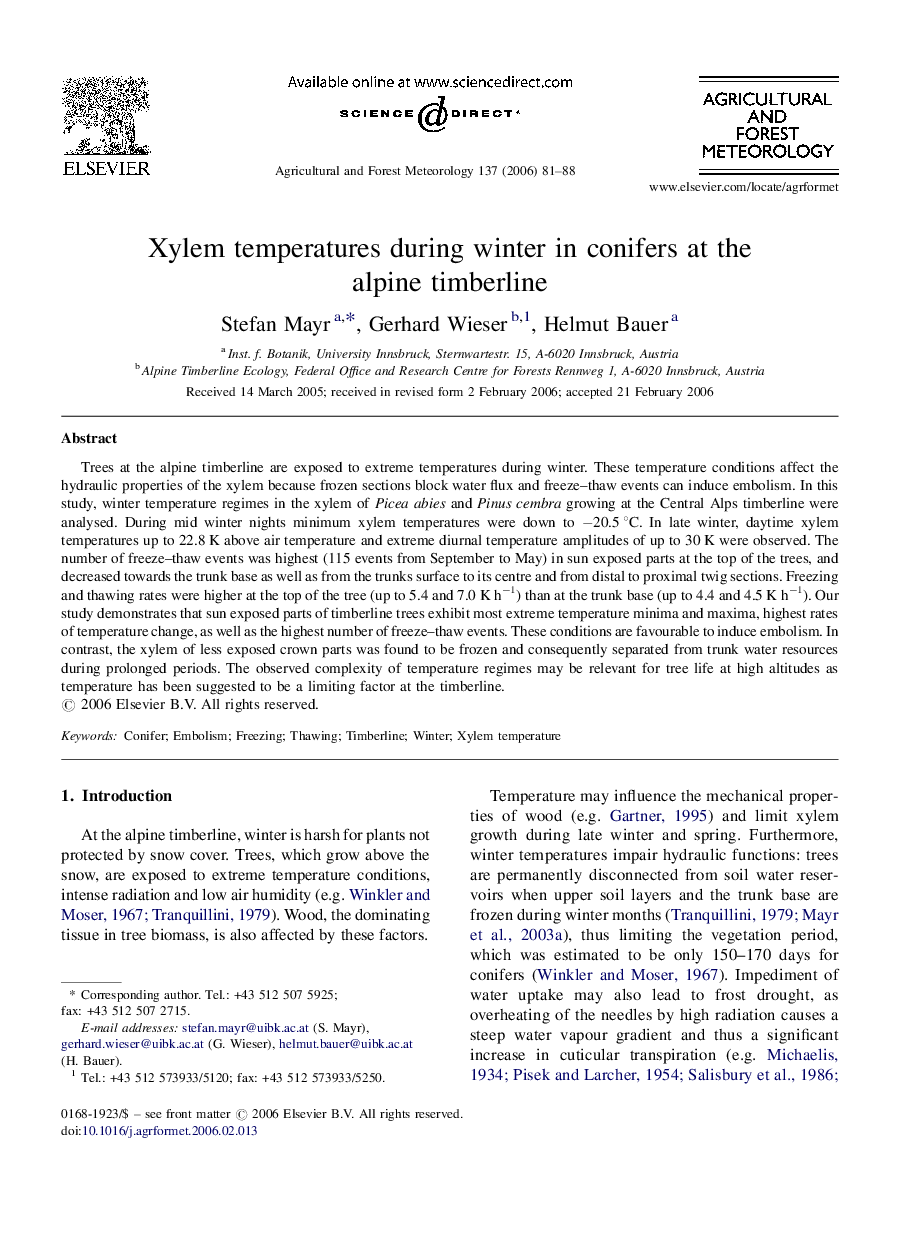| Article ID | Journal | Published Year | Pages | File Type |
|---|---|---|---|---|
| 83056 | Agricultural and Forest Meteorology | 2006 | 8 Pages |
Trees at the alpine timberline are exposed to extreme temperatures during winter. These temperature conditions affect the hydraulic properties of the xylem because frozen sections block water flux and freeze–thaw events can induce embolism. In this study, winter temperature regimes in the xylem of Picea abies and Pinus cembra growing at the Central Alps timberline were analysed. During mid winter nights minimum xylem temperatures were down to −20.5 °C. In late winter, daytime xylem temperatures up to 22.8 K above air temperature and extreme diurnal temperature amplitudes of up to 30 K were observed. The number of freeze–thaw events was highest (115 events from September to May) in sun exposed parts at the top of the trees, and decreased towards the trunk base as well as from the trunks surface to its centre and from distal to proximal twig sections. Freezing and thawing rates were higher at the top of the tree (up to 5.4 and 7.0 K h−1) than at the trunk base (up to 4.4 and 4.5 K h−1). Our study demonstrates that sun exposed parts of timberline trees exhibit most extreme temperature minima and maxima, highest rates of temperature change, as well as the highest number of freeze–thaw events. These conditions are favourable to induce embolism. In contrast, the xylem of less exposed crown parts was found to be frozen and consequently separated from trunk water resources during prolonged periods. The observed complexity of temperature regimes may be relevant for tree life at high altitudes as temperature has been suggested to be a limiting factor at the timberline.
